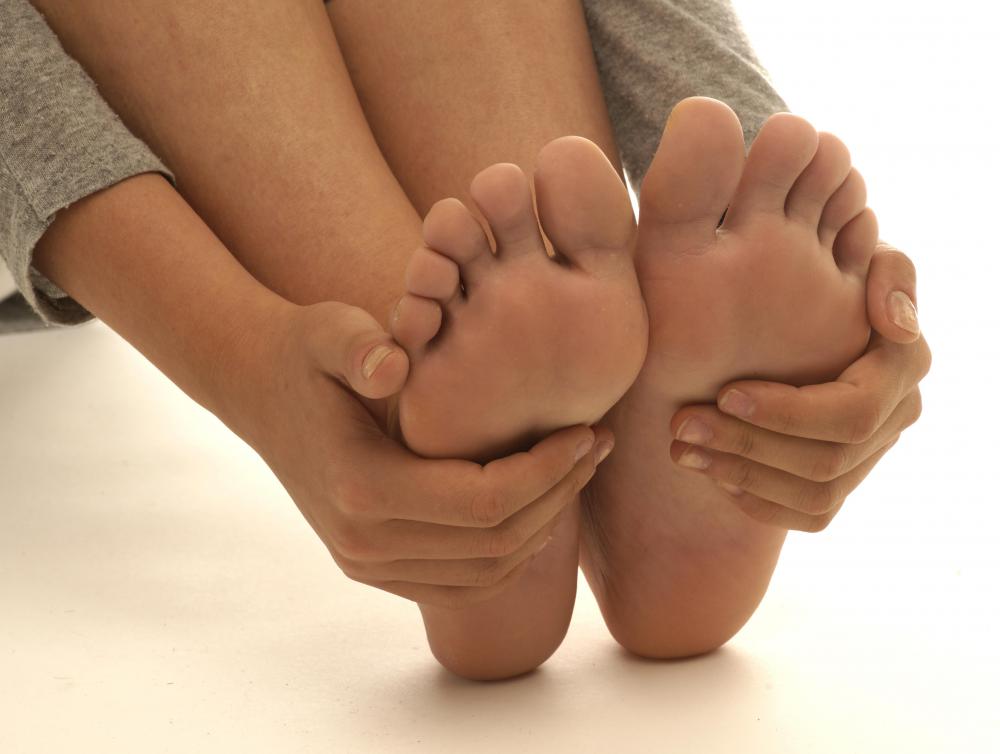At WiseGEEK, we're committed to delivering accurate, trustworthy information. Our expert-authored content is rigorously fact-checked and sourced from credible authorities. Discover how we uphold the highest standards in providing you with reliable knowledge.
What are Some Symptoms of Sever's Syndrome?
Sever's syndrome, also known as Apophysitis Calcanei, is a foot condition that most commonly presents in late childhood and early adolescence. It is caused by the bones in the leg growing faster than the Achilles’ tendon, which connects the leg bones to the heel bones. The Achilles’ tendon is pulled too tight, putting tension on the heel bone. As this continues, the area becomes very painful and inflamed.
There are several symptoms of Sever's syndrome. Due to the inflammation, the back of the heel may become red and swollen. It will be very painful to the touch, especially if the area where the tendon and heel connect is touched or squeezed. Pain may be present in the foot or lower leg as well. Walking and running will be very painful for the child.

Another possible symptom of Sever's disease is a small lump that may be present at the back of the heel. Not every case has this symptom, though. The heel will feel a worse with activity, but start to feel better when rested. The heel and foot may be very stiff, especially in the morning. The Achilles tendon, as well as other tendons in the leg, may also feel tight.

Treatment for Sever's syndrome involves lots of rest. By not using the affected foot, or feet, the inflammation will go down. Heel inserts for shoes can be a great help for this condition. They will shorten the length that the Achilles tendon has to stretch, allowing the tendon to grow and catch up with the length of the leg. Ice can help relieve the swelling and pain. Pain medications may be prescribed for two to six weeks. Physical therapy may also be recommended.

Sever's syndrome will eventually correct itself, as the Achilles tendon grows. Until that point, Sever's syndrome can be very limiting for children, especially those who are active in sports. Most children will outgrow this condition within a year or so. A doctor can prescribe a treatment plan to make the pain more bearable until that point.
AS FEATURED ON:
AS FEATURED ON:













Discuss this Article
Post your comments